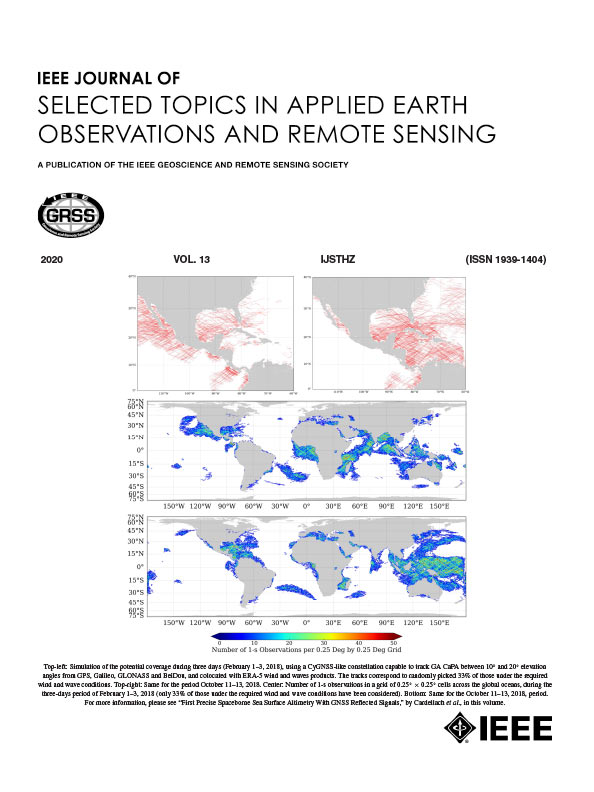PPDM-YOLO: A Lightweight Algorithm for SAR Ship Image Target Detection in Complex Environments
IF 5.3
2区 地球科学
Q1 ENGINEERING, ELECTRICAL & ELECTRONIC
IEEE Journal of Selected Topics in Applied Earth Observations and Remote Sensing
Pub Date : 2025-08-25
DOI:10.1109/JSTARS.2025.3602497
引用次数: 0
Abstract
To address the critical challenges in synthetic aperture radar (SAR) ship target detection, including complex background speckle noise interference and the difficulty in balancing model lightweight design with detection accuracy, this article proposes an innovative PPDM-YOLO model. Through modular architecture design, we establish a four-part technical framework: First, a lightweight feature extraction module named PCA is developed to reduce computational complexity by analyzing feature map redundancy, effectively mitigating feature degradation caused by noise. Second, the noise-resistant enhancement module, PSA-G, integrates the multiscale adaptive gradient threshold module with a dynamic spatial attention mechanism. This integration enhances target feature representation while effectively suppressing noise interference. Third, DySample technology is employed in place of conventional upsampling methods to improve the quality of feature reconstruction and preserve spatial details. In addition, a multiscale fusion small target detection network is introduced to boost small object detection through cross-layer feature interaction. Experimental results on HRSID and SSDD datasets demonstrate that PPDM-YOLO achieves 93.7% mAP50 and 70.3% mAP50–95 on HRSID, while reaching 99.4% mAP50 and 78.7% mAP50–95 on SSDD, showing significant advantages over mainstream detection models. With 34.7% fewer parameters than YOLOv11n, our model achieves optimal balance among noise suppression, model lightweighting, and detection accuracy. This research provides an efficient and reliable technical solution for real-time SAR ship detection in complex marine environments.PPDM-YOLO:一种用于复杂环境下SAR舰船图像目标检测的轻量级算法
针对合成孔径雷达(SAR)舰船目标检测中存在的背景散斑噪声干扰复杂、模型轻量化设计与检测精度难以平衡等关键问题,提出了一种新颖的PPDM-YOLO模型。通过模块化的体系结构设计,建立了一个由四部分组成的技术框架:首先,开发了一个轻量级的特征提取模块PCA,通过分析特征映射冗余来降低计算复杂度,有效缓解了噪声对特征退化的影响;其次,将多尺度自适应梯度阈值模块与动态空间注意机制相结合,构建了PSA-G抗噪增强模块。这种集成增强了目标特征的表示,同时有效地抑制了噪声干扰。第三,采用DySample技术代替传统的上采样方法,提高特征重建质量,保留空间细节。此外,引入了一种多尺度融合小目标检测网络,通过跨层特征交互增强小目标检测能力。在HRSID和SSDD数据集上的实验结果表明,PPDM-YOLO在HRSID上达到了93.7%的mAP50和70.3%的mAP50 - 95,在SSDD上达到了99.4%的mAP50和78.7%的mAP50 - 95,与主流检测模型相比具有显著的优势。该模型的参数比YOLOv11n少34.7%,实现了噪声抑制、模型轻量化和检测精度的最佳平衡。本研究为复杂海洋环境下SAR船舶实时检测提供了一种高效可靠的技术解决方案。
本文章由计算机程序翻译,如有差异,请以英文原文为准。
求助全文
约1分钟内获得全文
求助全文
来源期刊
CiteScore
9.30
自引率
10.90%
发文量
563
审稿时长
4.7 months
期刊介绍:
The IEEE Journal of Selected Topics in Applied Earth Observations and Remote Sensing addresses the growing field of applications in Earth observations and remote sensing, and also provides a venue for the rapidly expanding special issues that are being sponsored by the IEEE Geosciences and Remote Sensing Society. The journal draws upon the experience of the highly successful “IEEE Transactions on Geoscience and Remote Sensing” and provide a complementary medium for the wide range of topics in applied earth observations. The ‘Applications’ areas encompasses the societal benefit areas of the Global Earth Observations Systems of Systems (GEOSS) program. Through deliberations over two years, ministers from 50 countries agreed to identify nine areas where Earth observation could positively impact the quality of life and health of their respective countries. Some of these are areas not traditionally addressed in the IEEE context. These include biodiversity, health and climate. Yet it is the skill sets of IEEE members, in areas such as observations, communications, computers, signal processing, standards and ocean engineering, that form the technical underpinnings of GEOSS. Thus, the Journal attracts a broad range of interests that serves both present members in new ways and expands the IEEE visibility into new areas.

 求助内容:
求助内容: 应助结果提醒方式:
应助结果提醒方式:


